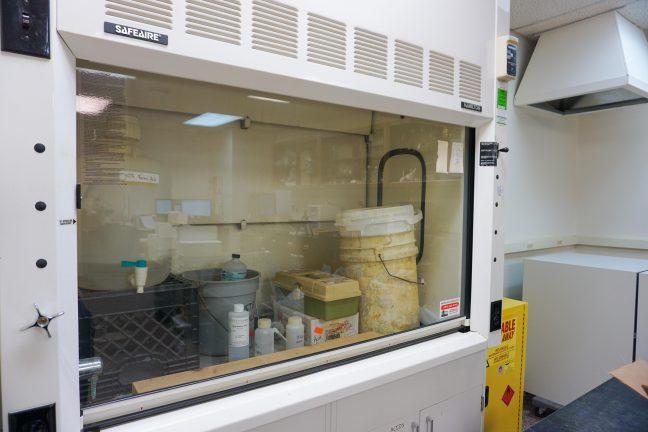Mankind is inventive. The past 100 years have marked great changes in the course of human history. Thomas Edison brought us the electrical light. Henry Ford brought us the automobile. And George Foreman brought us the George Foreman grill. While all these inventors contributed to society’s well being, none were as prolific as British inventor Paul Pedrick.
Pedrick reached his prime in the 1960s and ’70s tackling all types of problems from irrigating the deserts of Australia and Africa to ending the Cold War through the use of satellites. The man was born to invent. He spent his entire life working as an examiner in Great Britain’s patent office and immediately went to work applying for an extraordinary number of patents upon his retirement. Pedrick was one of those guys who had an idea for everything.
I’m sure many of us have been frustrated with our golf game at one point or another. We slice and we hook and we align our feet so that we don’t slice and the ball hooks. Well, Pedrick felt our pain and created the world’s only golf ball with flaps. The flaps were held in place by magnets and if the ball were to slice, the centrifugal force would overcome the magnetic force and the flaps would deploy. Suppose you lined up your feet forgetting about the wonders of the ball and hit it straight into deep rough. No worries here because Pedrick has us covered again. The man’s always thinking. The internal structure of the ball reflects radio waves from a homing device carried by the golfer, making retrieval a snap.
After a lifetime in the patent office, you’d think someone might have envisioned a way to solve the world famine problem. Well, that’s exactly what Pedrick did.
The plan was simple enough. Antarctica is uninhabited with vast amounts of fresh water. The simple solution to the world famine problem would be to construct a pipe from the top of the Antarctic plateau down to sea level. The water and ice fragments would gain speed because the pipe would be on a downward slope. Once at sea level, the water would then be pumped naturally using the Earth’s rotation and the Coriolis effect.
So now we’ve eliminated the problem of slices and hooks, lost balls, and the possibility of any future water wars. Let’s remember when Pedrick was coming up with these ideas. It was the 1960s and ’70s, so naturally he would address the issue of gas guzzling automobiles.
With UK Patent 1405575, Pedrick proved that man and nature can live in harmony. Take a popular car of the 1970s such as the Volkswagen Rabbit and attach a horse through a series of levers and straps to the back. Now, you’ve got a horse-powered Volkswagon Rabbit. Controlling the speed is easy. Pushing down on the pedal changes the distance the horse’s feedbox is from its mouth. If you want the car to go faster, push the pedal harder, and the horse will have to run after its feedbox. Thanks to the straps and levers the movement of the horse will propel the car. To get the horse started, the ignition switch will provide an electric shock to the horse’s ass. Where was this man during the energy crisis of the early 1970s?
For this next invention, Pedrick goes a little out of his mind. Imagine a television tower acting as a telecommunications center, an airport, revolving restaurant all coupled with a transparent globe for transcendental meditation. Pedrick saw no need to attach water towers to the superstructure, but figured tanks attached to the tower filled with beer and emptied through gravity would be a definite plus to the surrounding area.
Pedrick had other inventions. He was always a huge fan of pipes and pumps. One idea that would have worked if there was enough money and no laws of physics would be a system of capturing all the fresh water leaving the mouth of the Amazon and pumping it to the Sahara desert thus curing the problem of a spreading Sahara.
He also devised a way to solve the tensions of the Cold War with a single satellite. With the help of the United Nations, three nuclear warheads would be placed on a satellite orbiting the earth. The satellite will constantly monitor China, the United States and the Soviet Union, and once it detects that one of those countries have been nuked, the satellite will launch the three missiles at Moscow, Washington and Beijing. Pedrick believed such a system would deter any of the superpowers from striking first or at all.
While Pedrick had many grand ideas for the international arena, he was always thinking about how his inventions could help everyday people. Suppose you are living in La Ciel and the cooks at Papa John’s fall asleep. The pizzas catch on fire and before you know it … BAM the whole complex is ablaze. The fire spreads to the Embassy, and we’re talking about a lot of people in serious danger. P-Drick’s got you covered.
If we lived in Pedrick’s world, the rooftops of La Ciel and the Embassy would have gigantic fire-curtains rolled up at the top. In the event of a fire, the curtains would be dropped to ground level thus suffocating the fire. Residents of the apartment complexes would need to go to special rooms so they could breathe.
These are only a small snippet of what Pedrick offered to the world. Titleist doesn’t sell golf balls with flaps. La Ciel and the Embassy don’t have gigantic fire curtains, and there are no doomsday satellites orbiting Earth.
In a time when there seems to be problems everywhere we look, it’s comforting to know that there might be people like Paul Pedrick looking out for solutions when all we hear about are problems.
Derek Montgomery ([email protected]) is a senior majoring in journalism and political science.







